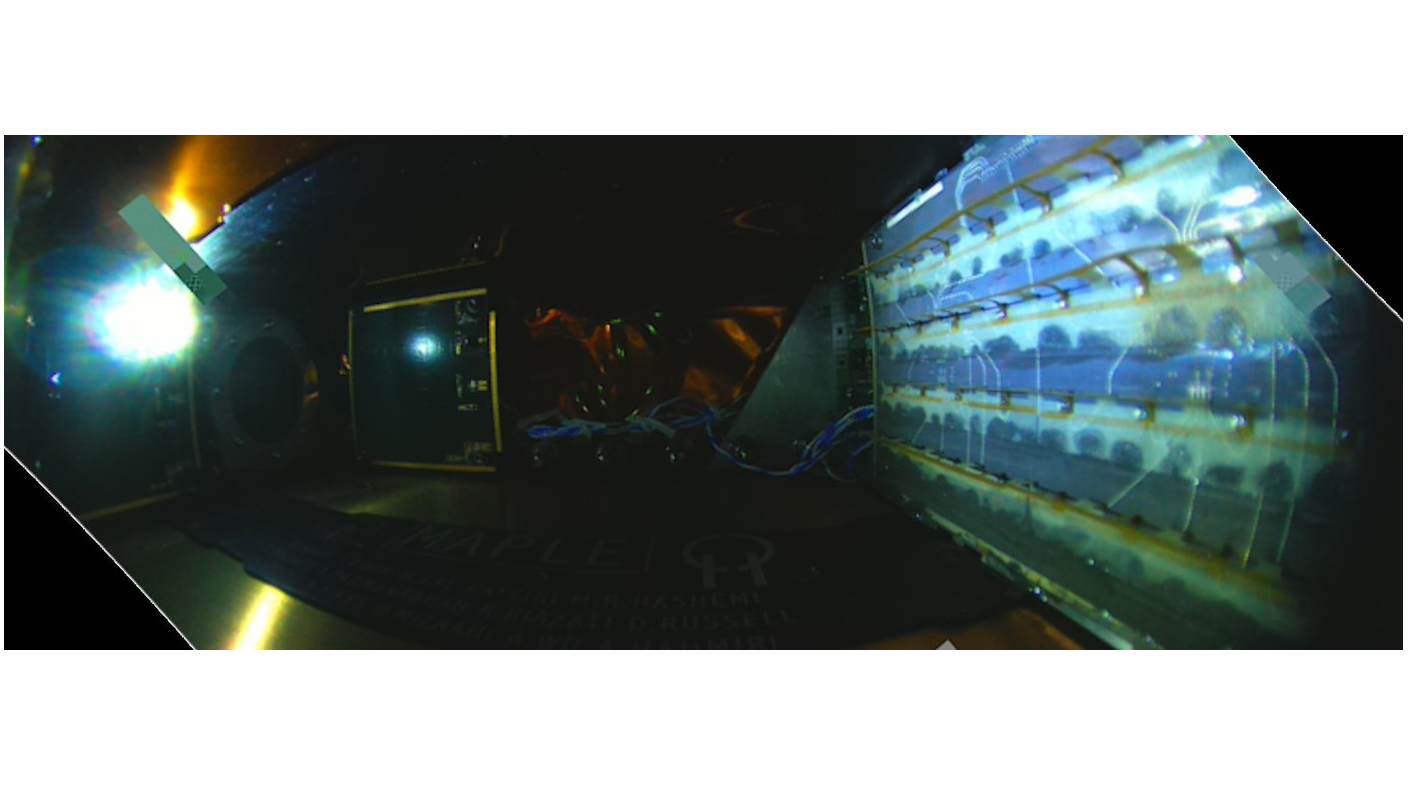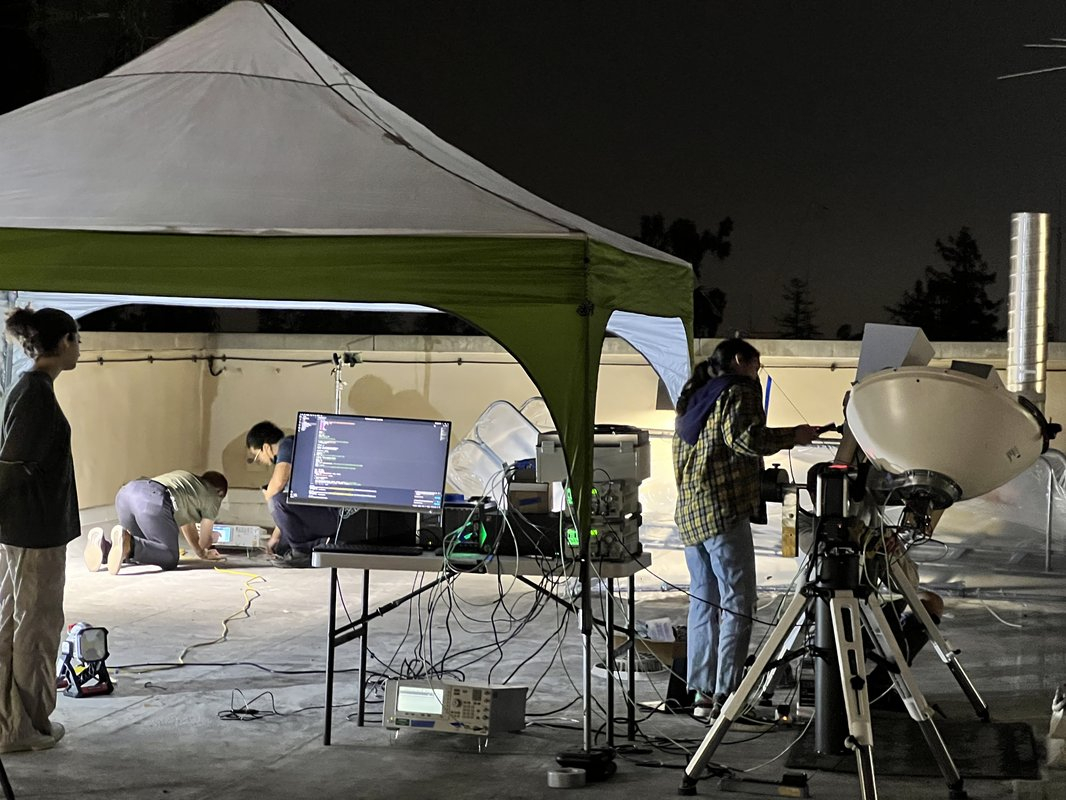Scientists beam solar power to Earth from space for 1st time ever
The Space Solar Power Demonstrator's MAPLE experiment was able to wirelessly transfer collected solar power to receivers in space and direct energy to Earth.

A space solar power prototype has demonstrated its ability to wirelessly beam power through space and direct a detectable amount of energy toward Earth for the first time. The experiment proves the viability of tapping into a near-limitless supply of power in the form of energy from the sun from space.
Because solar energy in space isn’t subject to factors like day and night, obscuration by clouds, or weather on Earth, it is always available. In fact, it is estimated that space-based harvesters could potentially yield eight times more power than solar panels at any location on the surface of the globe.
The wireless power transfer was achieved by the Microwave Array for Power-transfer Low-orbit Experiment (MAPLE), an array of flexible and lightweight microwave power transmitters, which is one of the three instruments carried by the Space Solar Power Demonstrator (SSPD-1).
SSPD-1 was launched in January 2023 as part of the California Institute of Technology's (Caltech) Space Solar Power Project (SSPP), the primary goal of which is to harvest solar power in space and then transmit it to the surface of Earth.
Related: Can space-based solar power really work? Here are the pros and cons.
"Through the experiments we have run so far, we received confirmation that MAPLE can transmit power successfully to receivers in space," Co-Director of the Space-Based Solar Power Project, Dr. Ali Hajimiri, said in a statement. "We have also been able to program the array to direct its energy toward Earth, which we detected here at Caltech. We had, of course, tested it on Earth, but now we know that it can survive the trip to space and operate there."
MAPLE demonstrated the transmission of energy wirelessly through space by sending energy from a transmitter to two separate receiver arrays around a foot away, where it was transformed into electricity. This was used to light up a pair of LEDs.
Breaking space news, the latest updates on rocket launches, skywatching events and more!
The instrument then beamed energy from a tiny window installed in the unit to the roof of Gordon and Betty Moore Laboratory of Engineering on Caltech’s campus in Pasadena.
Because MAPLE is not sealed, the experiment also demonstrated its capability to function in the harsh environment of space while subject to large swings in temperature and exposure to solar radiation. The conditions experienced by this prototype will soon be felt by large-scale SSPP units.
“To the best of our knowledge, no one has ever demonstrated wireless energy transfer in space, even with expensive rigid structures,” Hajimiri added. “We are doing it with flexible, lightweight structures and with our own integrated circuits. This is a first!”

In a video from Caltech, Hajimiri, who led the Caltech that developed MAPLE, explained how the wireless transmission of energy through space is based on a quantum phenomenon called “interference.”
Interference arises due to the wave-like nature of light. When two light waves overlap, if they are in phase, the waves align, and the peaks of the waves meet and create a greater peak with a height that is the sum of the two original peaks. This is called constructive interference.
If, however, the waves of light are out of phase and overlap while misaligned, a peak may meet a trough in the wave, and both are canceled out, a process known as destructive interference.
"If you have multiple sources that are operating in concert, in the same phase, you can actually direct energy in one direction so all of them will only add in one direction and will cancel each other out in all other directions," Hajimiri said. "The same way that a magnifying glass can focus light into a small point, you can actually control the timing of this in such a way that you can focus all of that energy in a smaller area than the area that you started with."
By precisely controlling the timing of this process, the direction of the energy can be adjusted very rapidly on a scale of nanoseconds, and power can be redirected to space-based receivers or even receivers here on Earth. Together this allows the energy to be directed to the desired location and nowhere else, and all this can be done without the need for any moving mechanical parts.
Hajimiri and his team are now assessing the performance of the individual units that comprise MAPLE. a painstaking process that will take as long as six months to complete. This will allow them to provide feedback that will guide the development of fully realized versions of the system in the future.
It is planned that SSPP will eventually consist of a constellation of modular spacecraft collecting sunlight, transforming it into electricity, and turning this into microwaves that are then beamed over vast distances, including back to Earth, where energy is needed. This could include regions of the globe currently poorly served by existing energy infrastructure.
"In the same way that the internet democratized access to information, we hope that wireless energy transfer democratizes access to energy," Hajimiri concluded. "No energy transmission infrastructure will be needed on the ground to receive this power. That means we can send energy to remote regions and areas devastated by war or natural disaster."

Robert Lea is a science journalist in the U.K. whose articles have been published in Physics World, New Scientist, Astronomy Magazine, All About Space, Newsweek and ZME Science. He also writes about science communication for Elsevier and the European Journal of Physics. Rob holds a bachelor of science degree in physics and astronomy from the U.K.’s Open University. Follow him on Twitter @sciencef1rst.

